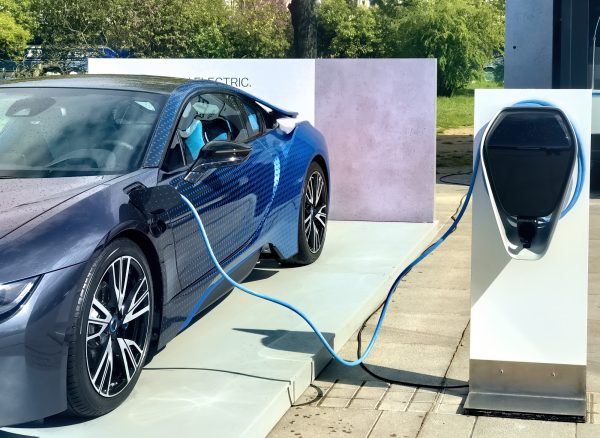Europe’s reliance on Russian oil and gas pales in comparison to the United States’ dependence on China for critical minerals. Amid heightened technology competition and a global push toward green energy, China’s dominance of the critical mineral supply chain presents the United States with an unsustainable strategic vulnerability. The United States should cooperate with partners in Latin and South America to mitigate risk and ensure supply chain resilience.
Critical minerals form the backbone of the digital economy and modern military power. They underpin everything from computers and vacuum cleaners to advanced weapons systems and clean energy technologies like electric vehicles, wind turbines, and solar panels.
Without access to critical minerals, U.S. innovation would stall, and the cost of consumer electronics would surge. The U.S. military’s weapons would fail to hit their targets, and the country would fall short of its sustainability goals. In short, the United States’ technological edge, military superiority, and global leadership position hinge on something it currently lacks: a secure mineral supply.
The United States was 100 percent import reliant for 12 of the 50 designated critical minerals in 2022 and more than 50 percent import reliant for an additional 31. It maintains little domestic mineral mining, refining, and processing capacity. Today, the United States produces only 4 percent of the lithium, 13 percent of the cobalt, and none of the graphite required to meet current demand for electric vehicles, for example, and demand is only projected to grow as the world moves to eliminate net carbon emissions by 2050.
Diplomat Brief
Weekly Newsletter
N
Get briefed on the story of the week, and developing stories to watch across the Asia-Pacific.
Get the Newsletter
Comparatively, China is the leading producer of 30 critical minerals, accounts for 80 percent of critical mineral processing, and controls 77 percent of the world’s electric vehicle manufacturing capacity. China’s dominance of rare earth elements is particularly acute. It accounts for 63 percent of the world’s rare earth mining, 85 percent of rare earth processing, and 92 percent of rare earth magnet production. Even more concerning, China has demonstrated a willingness to use its advantageous position in the supply chain as geopolitical leverage.
China halted shipments of rare earth elements to Japan in 2010 in response to a territorial dispute over the Senkaku/Diaoyu Islands. The Chinese government also considered banning the export of rare earths to the United States in 2019 after then-U.S. President Donald Trump introduced tariffs on Chinese goods and sanctioned Chinese telecommunications company Huawei. As recently as April 2023, Chinese officials reportedly contemplated banning the export of certain rare earth processing and refining technologies to the United States. China could choose to weaponize the mineral supply chain at any given moment.
To prepare for such a contingency and reduce its reliance on Beijing, U.S. policymakers should look to Latin and South America.
The Americas maintain several mineral advantages. The region already produces significant amounts of lithium and copper, which are essential components of many emerging technologies. It is well-positioned to increase production to meet growing demand for these commodities, housing several sizable untapped reserves. The region could also diversify into new minerals, such as graphite, nickel, manganese, and rare earth elements. Brazil alone holds approximately one-fifth of global reserves in each of these resources, but today only produces small to moderate amounts.
Advertisement
Additionally, the region’s mining sector benefits from the abundant availability of clean energy resources, which can enable low-carbon operations that minimize the harmful social and environment effects of mining. Latin American states have demonstrated the political will to tackle such environmental, social, and governance (ESG) challenges, contributing to the development of natural resource governance frameworks that are fairly robust relative to other regions.
The Americas could assume a greater leadership position in the critical minerals sector and serve as a counterweight to Beijing’s outsized influence over the supply chain. But to leverage its full potential, the region must address several remaining hurdles, including a lack of sufficient investment in the mining sector, a need to develop efficient permitting and regulatory regimes, and conflict with local communities affected by mining activities. The United States can take several steps to help the region overcome these obstacles, with the benefit of simultaneously reducing its own dependence on China.
First, the U.S. Department of State should invite Latin and South American countries to join the Minerals Security Partnership (MSP). Argentina and Brazil attended a convening of the MSP as observers in September 2022. Welcoming them and other key mineral producers — like Bolivia, Chile, and Peru — as full members could help attract needed investment to the region and advance responsible mineral mining, processing, refining, and recycling practices. The Americas’ inclusion in the MSP would also help align the priorities of like-minded mineral-rich countries, facilitate best practice sharing, and foster discussion about supply chain resilience.
Second, the White House should pursue bilateral clean energy agreements — similar to the U.S.-Japan Climate Partnership — with individual countries in the Americas. To effectively counter China’s efforts to access mineral resources, the U.S. must position itself as a reliable alternative partner that values the region for more than just raw materials. Extending U.S. engagement beyond mineral extraction will help build trust and foster mutually beneficial partnerships. Targeted investments could also bolster the region’s overall technological capacity by cultivating the expertise and infrastructure necessary to advance offshore energy products, biofuels, and other clean energy technologies.
Increased cooperation with Latin and South American countries is not a silver bullet solution to the United States’ critical mineral problem. Developing a secure and reliable critical minerals supply chain will be a costly and time-intensive process. But the onus is on U.S. policymakers to start moving the needle.
